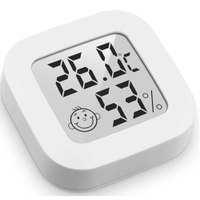'What I wish I had known before buying a dehumidifier' reveals a home tech expert
Our insider insights reveal what you need to know before buying a dehumidifier... and whether you really need one
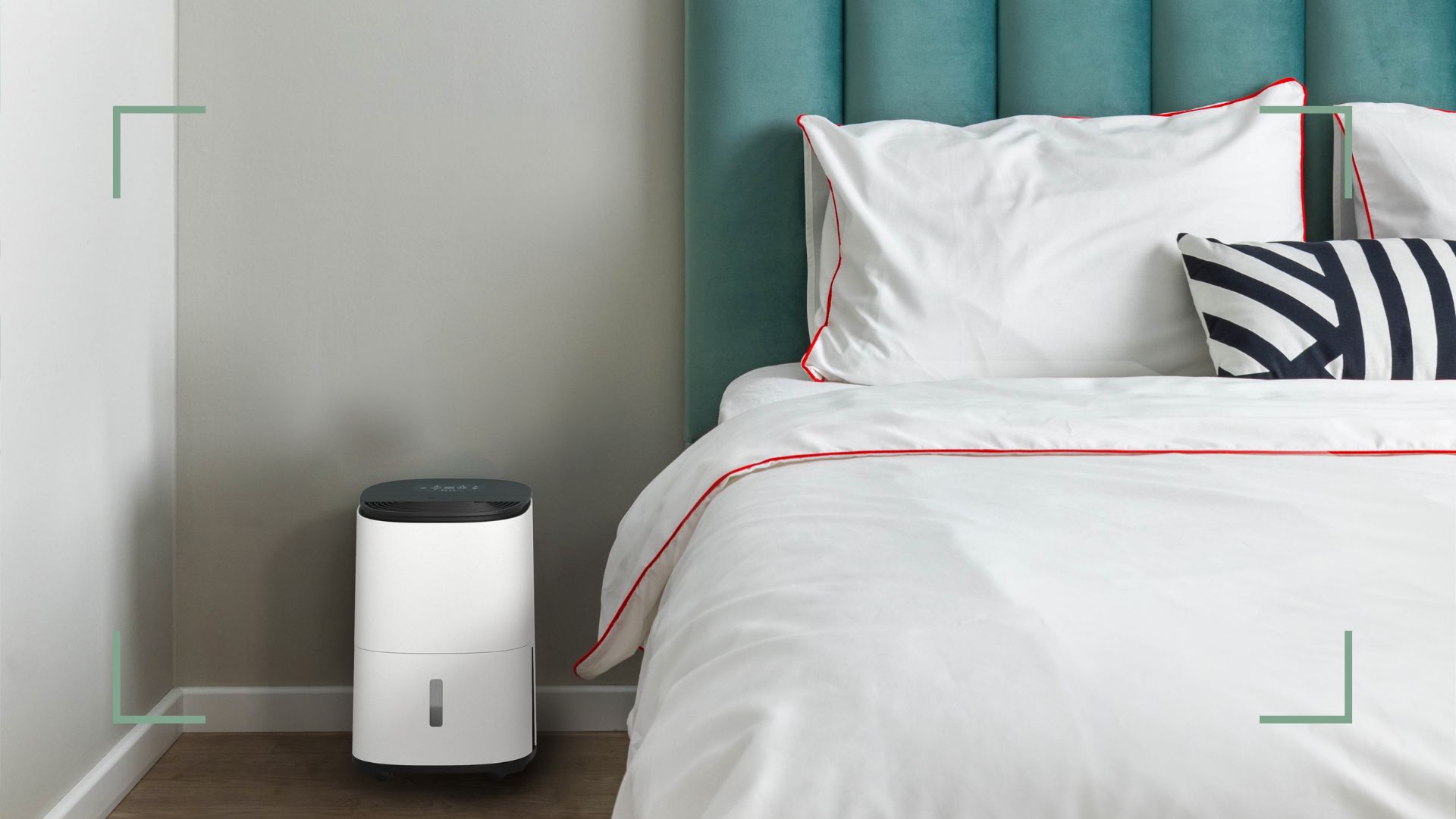

Are your allergies playing up? Is condensation appearing on your windows? Has mould appeared on your walls or ceilings? All of these are signs that you need a dehumidifier at home. But if you've never owned one before, there are a few things to be aware of before you pick one.
I've been writing about home tech for over 20 years, and have been lucky enough to try out some of the best dehumidifiers around. Each one has been given a thorough road test in my draughty three-bedroom Victorian home, which has had more than its fair share of damp issues and therefore proves perfect to demonstrate how we test dehumidifiers.
During this time, I've gained an expert understanding of how dehumidifiers work, and the features I value the most (and least!). Take advantage of my knowledge – and the opinions of a couple of my favourite dehumidifier experts – to ensure you get the model that's right for you.
So before you go out and buy a model, it's worth understanding the features worth spending your money on.
What you need to know before buying a dehumidifier
From condensation on the windows to nasty black mould on the walls – you name it, our poor house has suffered from it. If you too have these problems fear not, thankfully, a trusty dehumidifier can go a long way to combat these issues.
It’s best to keep humidity levels at home between 30% and 50% to limit the growth of potentially toxic mould. But poor insulation, airing wet washing indoors and the steam generated from showering or cooking can all quickly see atmospheric moisture levels rise further, creating an environment where bacteria (and that pesky mould) can thrive.
That's where a dehumidifier comes in, removing water vapour from the air to create a cleaner, healthier environment.
Sign up for the woman&home newsletter
Sign up to our free daily email for the latest royal and entertainment news, interesting opinion, expert advice on styling and beauty trends, and no-nonsense guides to the health and wellness questions you want answered.
Like the best air fryers and best electric blankets, dehumidifiers are emerging as a poster child for energy saving at home – hence why sales are soaring.

"Dehumidifier sales have tripled [compared to last year], as customers look for ways to reduce moisture and improve air quality," says Roshni Chauhan, an electrical buyer for John Lewis.
"We’re seeing customers looking for savvy ways to manage their heating costs, with heated clothes airers and dehumidifiers becoming the new air fryers. Both airers and dehumidifiers are great for drying laundry indoors, and cheaper to run than a traditional tumble dryer."
Convinced on why you should buy a dehumidifier? Here are some key features to look out for:
Compressor vs dessicant humidifiers
There are two main types of dehumidifiers.
A compressor dehumidifier will cool and condense the humid air by running it through a refrigerant (similar to what you'd find in a fridge). This converts it into water, which feeds into a tank that you then empty. Compressor humidifiers work best in warmer rooms and can stop working if the temperature drops below 4 degrees C.
Desiccant humidifiers, on the other hand, take the air and run it over a slowly-rotating desiccant wheel, which sucks up the moisture like a sponge. The wheel is then heated and blasted with a fan. The humid air condenses into water and collects in a tank, while the dry heated air is pumped back into the room.
Desiccant humidifiers are best for unheated rooms like garages, workshops and conservatories, where the temperature is likely to drop below 10°C for any extended period. They can be more expensive to run.
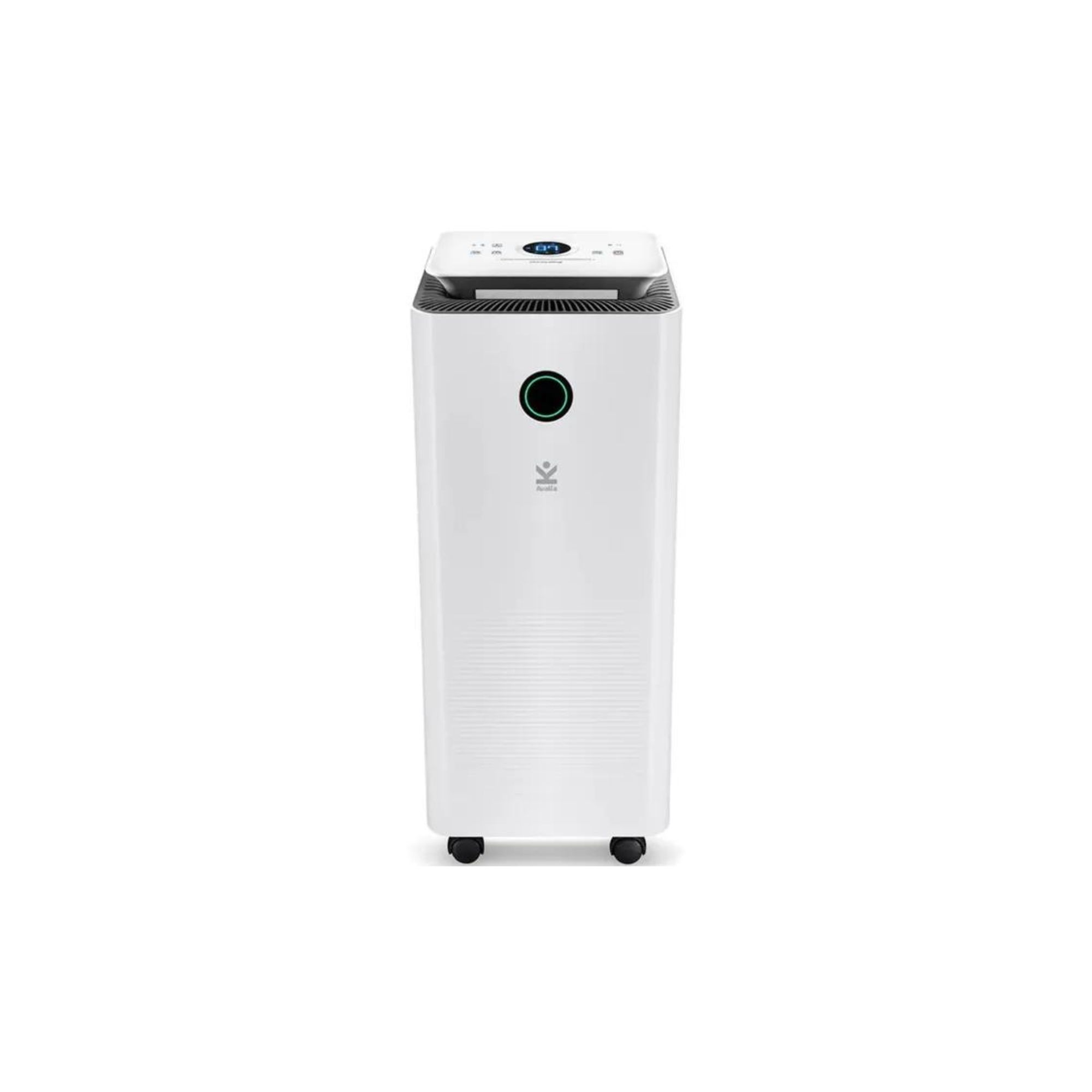
Rated the overall best on our list, this machine left the air in our home clean and moisture-free. It's the ideal choice if you're looking for a dehumidifier that's large enough to hold at least 16L of water, sleek, space-saving, and will dry your laundry.
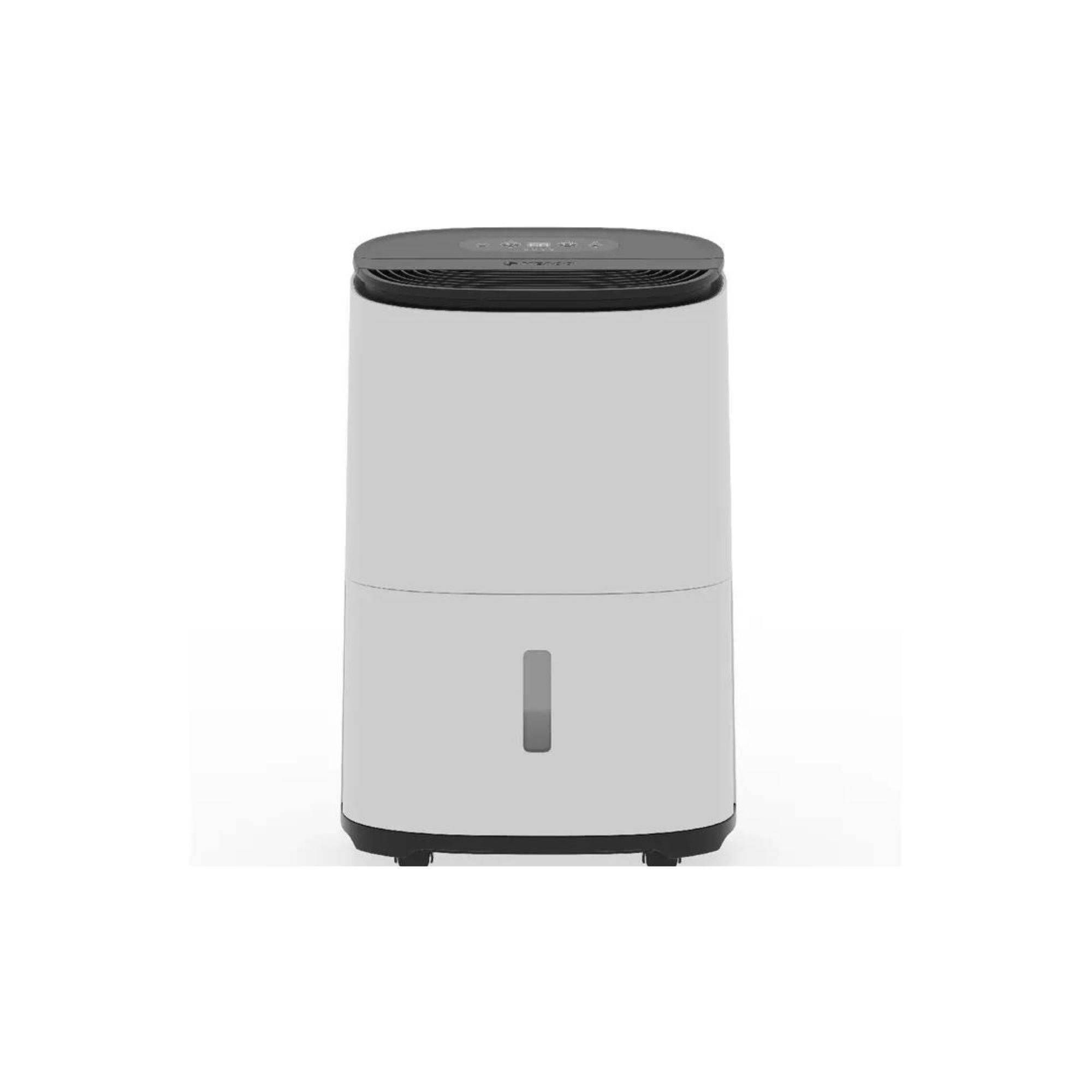
The MeacoDry Arete One dehumidifier review found this to be an all-around great buy. It's simple, easy to use therefore great for those who are new to the world of dehumidifiers. Not only is it super easy to use it's also quiet and features a laundry mode, handling your home's moisture and wet clothes.
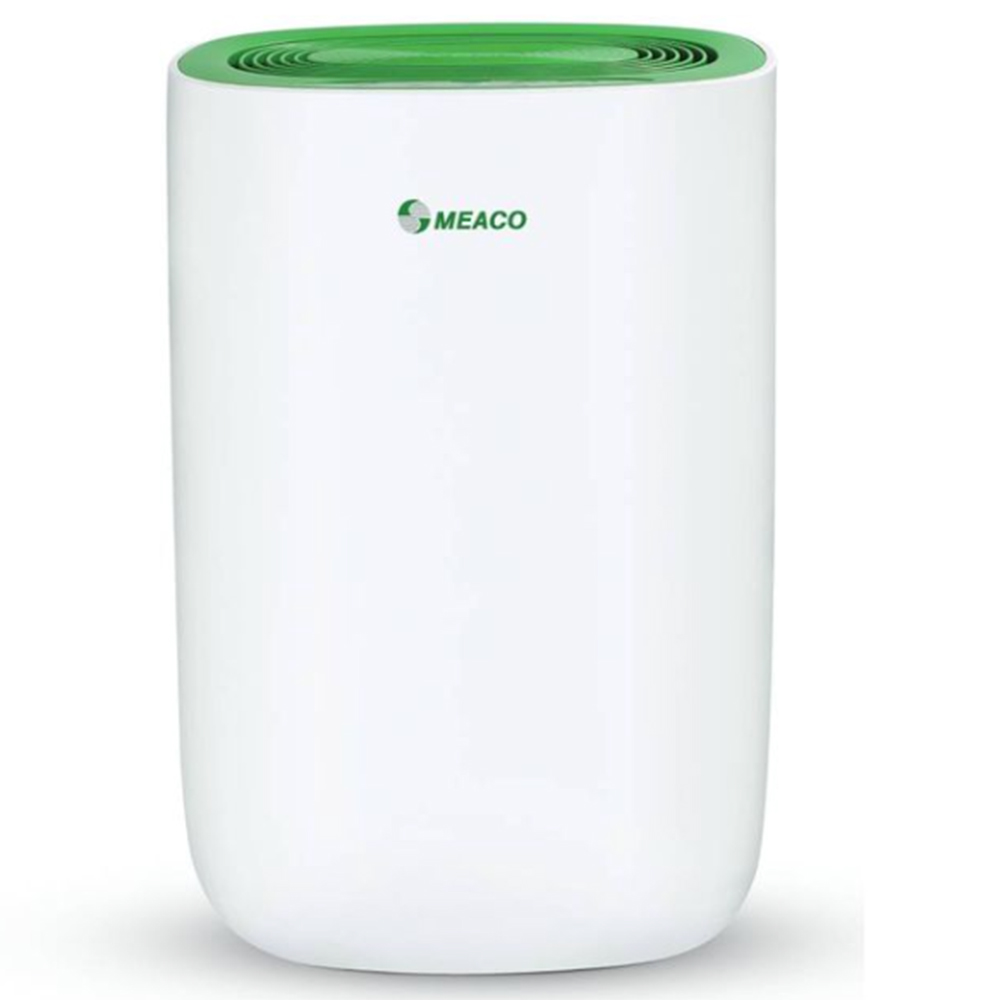
During our MeacoDry ABC 12Ldehumidifier review it really stood out as the best for drying clothes and laundry indoors. Our expert tried drying clothes that normally need 14-36 hours and found that the washing pile was iron-dry within six hours.
Capacity
The first thing to look at when buying a dehumidifier is the capacity, which will determine how much water it can collect.
"Providing guides is difficult because there are so many factors to take into account," says Chris Michael, managing director of dehumidifier manufacturer Meaco. "But it's worth remembering that people create moisture – by bathing, showering, cooking, boiling the kettle, drying laundry and even breathing – and not houses. So, the more people in a space, the fewer extractor fans in the kitchen and bathroom and the more washing being dried indoors, the larger the machine should be."
However, Chris does have some ballpark recommendations...
- 10 litres: suitable for houses/apartments up to two bedrooms with light mould/condensation (relative humidity 50-60%)
- 12 litres: best for houses/apartments up to two bedrooms with musty smells and regular or bad mould/condensation (70-100% humidity) OR three-bedroom homes with light mould/condensation (50-60% humidity).
- 20 litres: suitable for three-bedroom homes with mould and condensation in multiple rooms, on walls, furniture and clothes, where washing is dried indoors (relative humidity 70-100%) OR four to five-bed homes with light mould or condensation.
- 25 litres or above: reserved for damp four to five-bed houses with mould and condensation in multiple rooms. You may require two dehumidifiers.
Digital Hygrometer Indoor Thermometer, Was £6.59 now £4.99 at Amazon
Unsure of the humidity of your home? To measure more accurately w&h recommends buying this affordable digital hygrometer to gauge temperature and humidity levels.

Chris Michael is the expert co-founder of Meaco. Since its launch in 1991, Meaco has become a leading UK provider of air treatment products and the brand’s products have won a wealth of industry and design awards internationally.
Energy efficiency
A good reason to invest in a dehumidifier is that it costs pennies to run and can save you money in the long term. "The most important features these days are energy efficiency and noise level," says Chris Michael, who suggests checking the wattage of your dehumidifier with care. You may spot some entry-level models that are greedier when it comes to energy use.
"It is usually a mistake to buy cheaper because you will be spending a lot more in electricity bills and the savings will be wiped out within the first year of use," Chris explains.
"The bigger the dehumidifier, the more watts it’ll generally use. Large ones can use up to 500 watts, while the smaller models usually only use about 22 watts," explains Will Brook-Jones, an appliance expert at Currys.
However, the efficiency will be affected by the temperature of the room, whether you are maintaining your dehumidifier properly, the temperature of the room it's running in, and the type of dehumidifier (desiccant models have a heating element that can be hungrier for power) and whether it is controlled with a humidistat, which can shut on and off as needed (saving energy).
A standard wattage for a dehumidifier with a 20-litre capacity is around 480w. It’ll use 0.48 kWh, which equates to a cost of 13p an hour based on the latest energy price cap of 27p per kWh.
Carly Bullock, cleaning buyer at Lakeland, elaborates on the benefits of reducing the humidity in a home by saying: "Lots of people are now aware that placing a dehumidifier next to a clothes airer – heated or otherwise – can reduce laundry drying times. But it can also help with heating the home in general since dry air takes less time to heat."
Noise levels
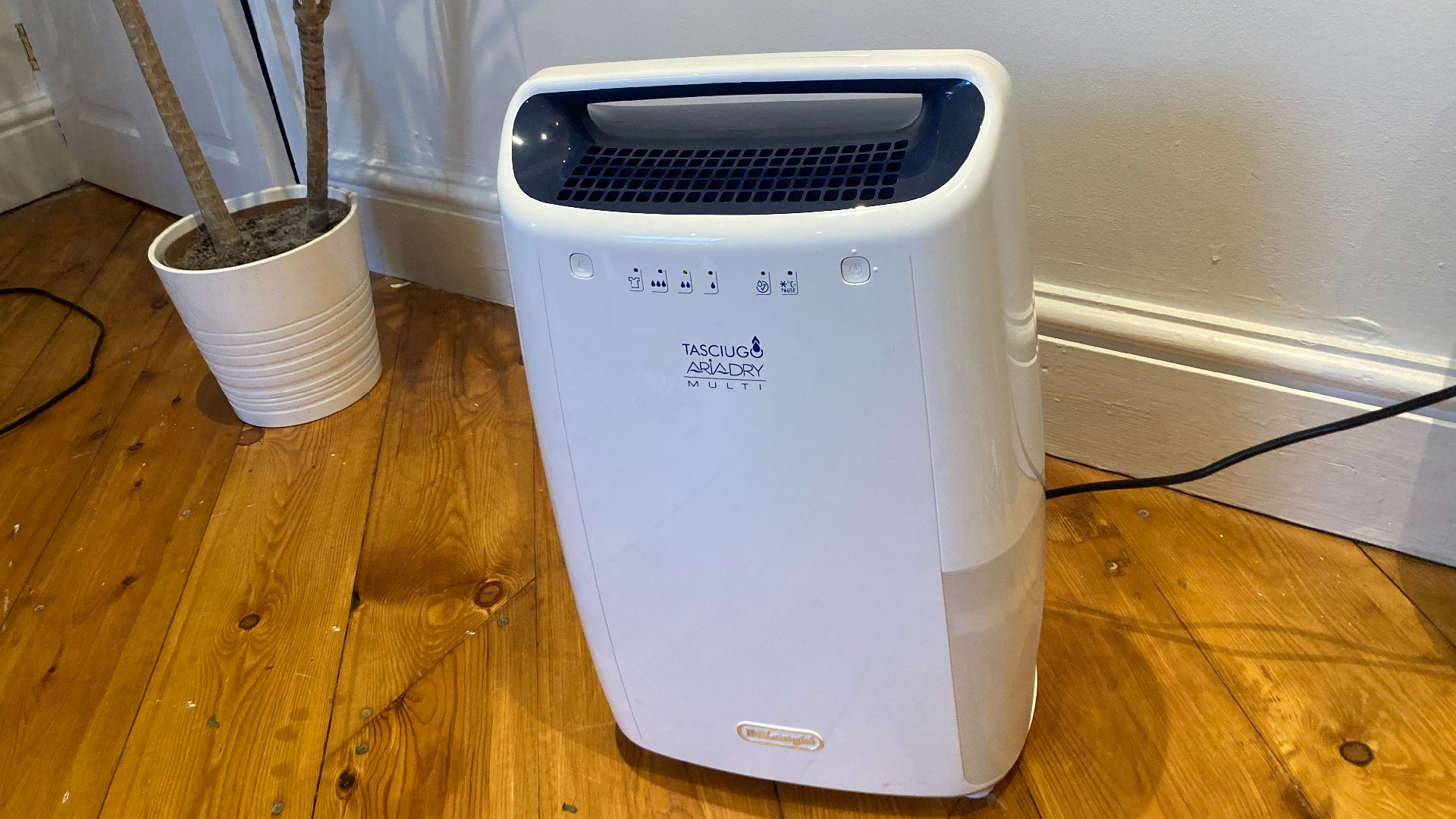
Take careful note of the maximum decibel level of your machine on its highest setting, especially if you're looking for the best dehumidifier for a bedroom.
"Noise is a huge factor because you are likely to turn the machine off if it is too loud," explains Chris Michael. "The smaller your house, the quieter the machine you will need. Try not to go above 40dB in a flat for example."
What I wish I'd known before buying a dehumidifier
So that's the tech talk out of the way. But what is living with a dehumidifier really like? Here are the things I have learned since owning a dehumidifier...
1. Just how much moisture they collect
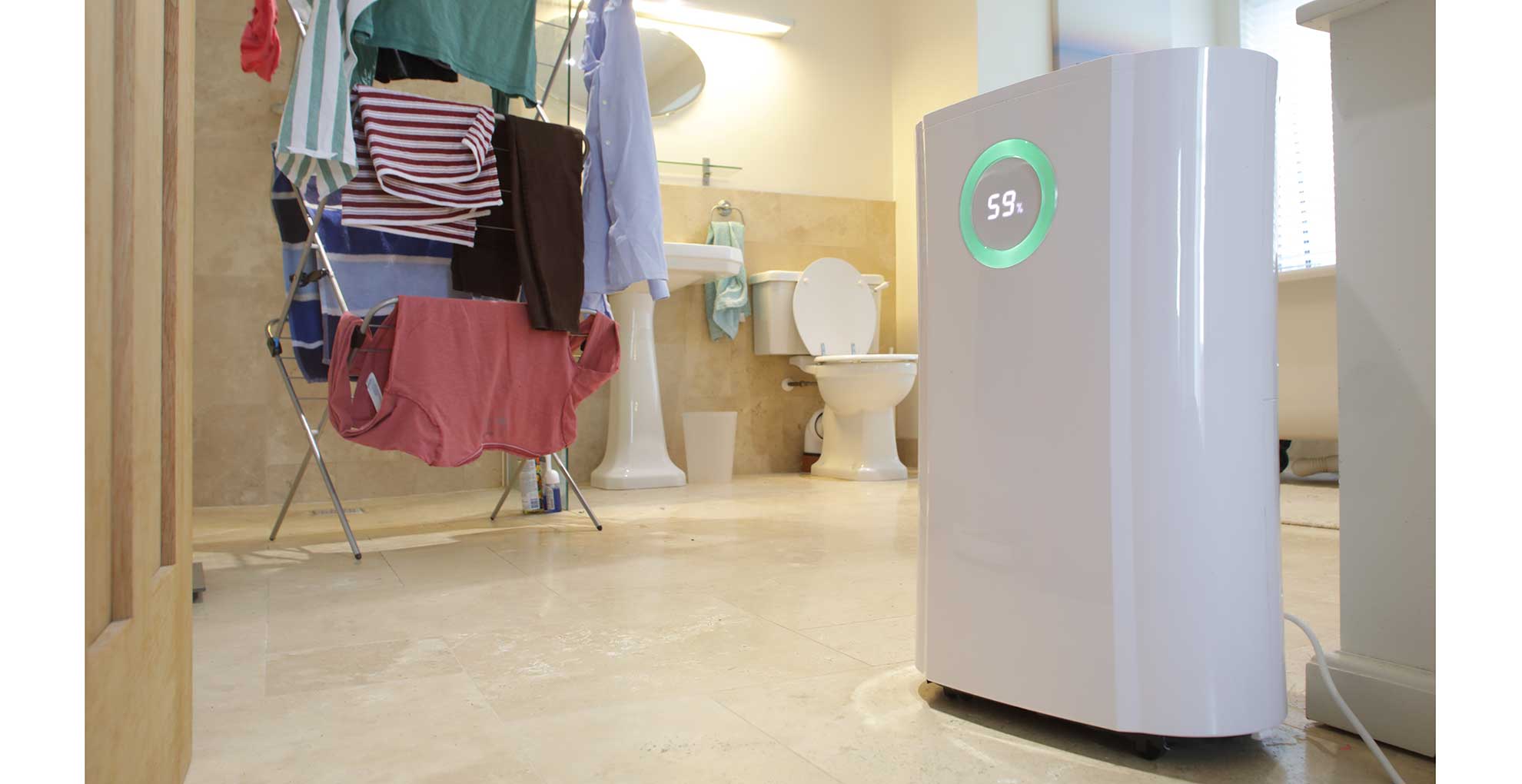
If you're investing in your first dehumidifier, prepare for your jaw to drop. I still remember the first time I plugged in a dehumidifier and let it run next to a clothes airer loaded with laundry. A few hours in it had already collected nearly 2 litres of water.
You'll be similarly surprised if you put it on in a kitchen when you're cooking. You might also notice that cooking smells reduce, too. Your home will smell altogether fresher after a day or two. Even my favourite scented candles seem to burn cleaner and smell stronger with a dehumidifier in the room.
2. They can be noisy
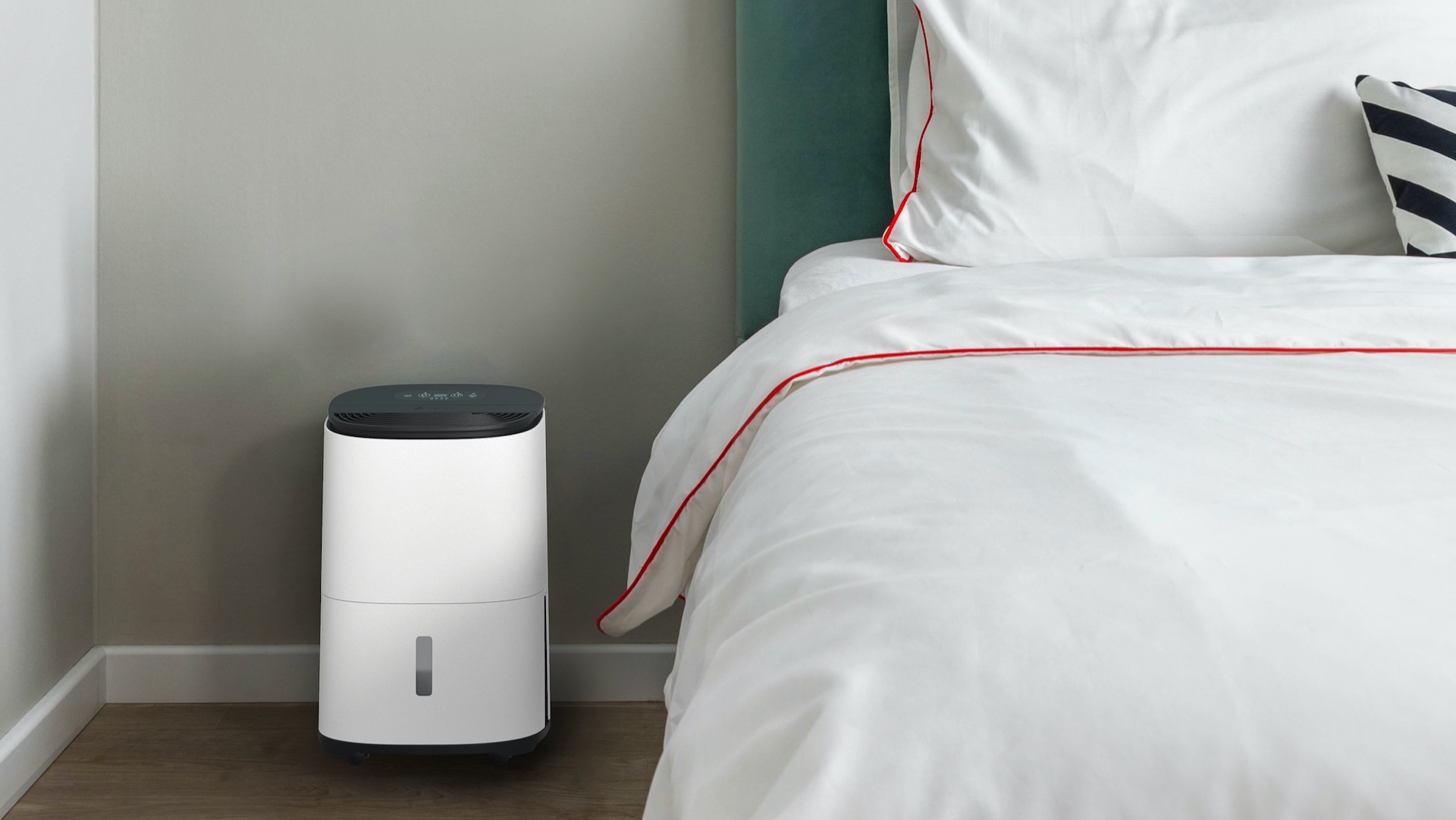
My first dehumidifier was especially noisy in its highest setting. I'd bought it as I had terrible mould issues in the bedroom of my one-bed flat, but it was quickly apparent I couldn't sleep with it running. In the end, I had to leave it on during the day when I was at work. Not ideal if you worry about appliances running unattended as being a fire hazard.
What I should have done is seek one of the best dehumidifiers for a bedroom, but hindsight is a marvellous thing. At the time I wasn't aware of just how noisy they could be
My current dehumidifier has Quiet Mark accreditation – which means it runs as low as a whisper, even on its high setting. The difference it makes is tremendous – and I have no more sleepless nights.
3. They're heavy when filled with water
When you buy your dehumidifier, portability is going to be important. Most people will want to move their appliance from room to room as they cook, dry laundry or target condensation and mould. But as I've learned from experience, they can be a pain to lumber around, especially when they're filled with water.
Remember, every litre of water will add a kilogram of weight. That's an extra 20kg for a standard-size model with a full water tank.
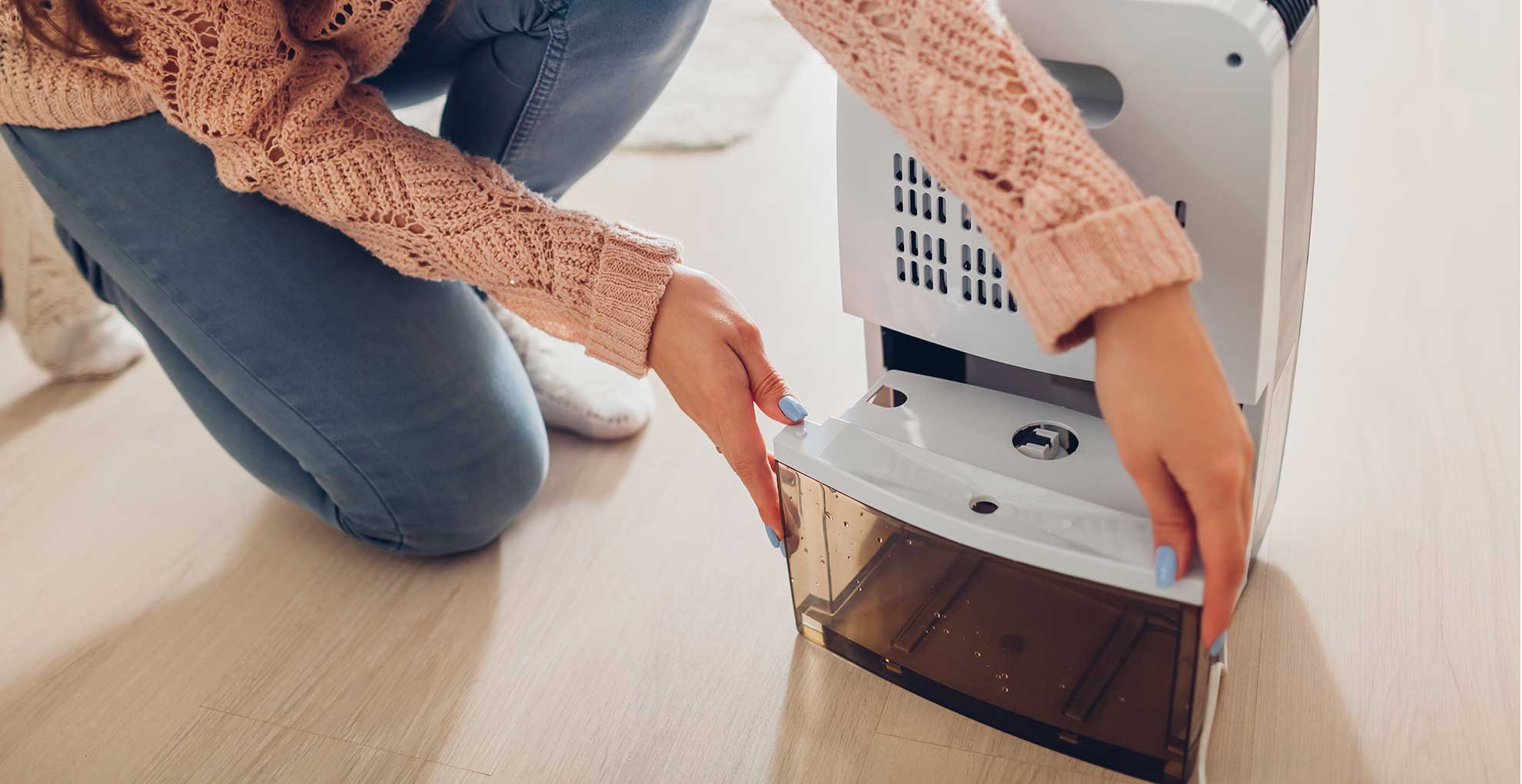
I'd recommend a model that runs on castors so that you can easily wheel it around. I like to use the collected water on my plants in summer, so I like my water tank to have a carry handle and a spout so it's easy to take it out to the garden. You could also use the water to flush the loo, wash the floors or in your steam iron – all good sustainable living solutions rather than pouring it away.
4. They're brilliant at banishing mould
Every house I've ever owned has had some sort of mould issue, maybe because I'm a fan of period properties that need a bit of love. And finding a patch of black mould on the walls is grim at best, and almost a bit scary. But a dehumidifier can honestly make a big difference.
I've been running a dehumidifier in my main bedroom for six months since I discovered a large patch lurking behind a chest of drawers. But since running my dehumidifier in there for a few hours a day, it hasn't returned.

"We currently do not test dehumidifiers as a standalone product to assess their efficacy in allergen reduction," Hunish Sembhi, head of endorsements for Allergy UK told us. "But we do recommend, for those patients who might be living with a mould allergy, that a dehumidifier can be of benefit to remove the humidity from the indoor environment to achieve the ideal indoor humidity of 50-55%."
"Moulds flourish in damp environments and therefore one of the best ways to prevent their growth is by creating a well-ventilated environment and implementing exposure reduction measures such as cleaning and utilising a dehumidifier and/or air purifiers," Hunish suggests for improving indoor air quality.

Hunish holds a Bachelors of Biomedical Sciences and a background in Pharmaceutical Sales. She leads Allergy UK's Endorsements Team which is responsible for endorsing, testing and identifying products which are designed to deliver benefits to the allergic community worldwide.
She is driven to use her scientific expertise to benefit organisations with strong social purposes and is passionate about finding product solutions which help improve the quality of life for people around the globe who live with allergic conditions.
5. They can make the air 'too' dry
From experience, I've learned not to run mine in my bedroom if I've got a bad cough or cold, as they can dry the air out and make things worse. I've also been known to wake up with chapped lips and a sore throat when running my dehumidifier in winter. So I've stopped running my model for too long into the night – luckily it has a timer, so it shuts off after a couple of hours.
They can be great at removing allergens from the air, though, especially if you choose a model with HEPA filters and other air purification features.
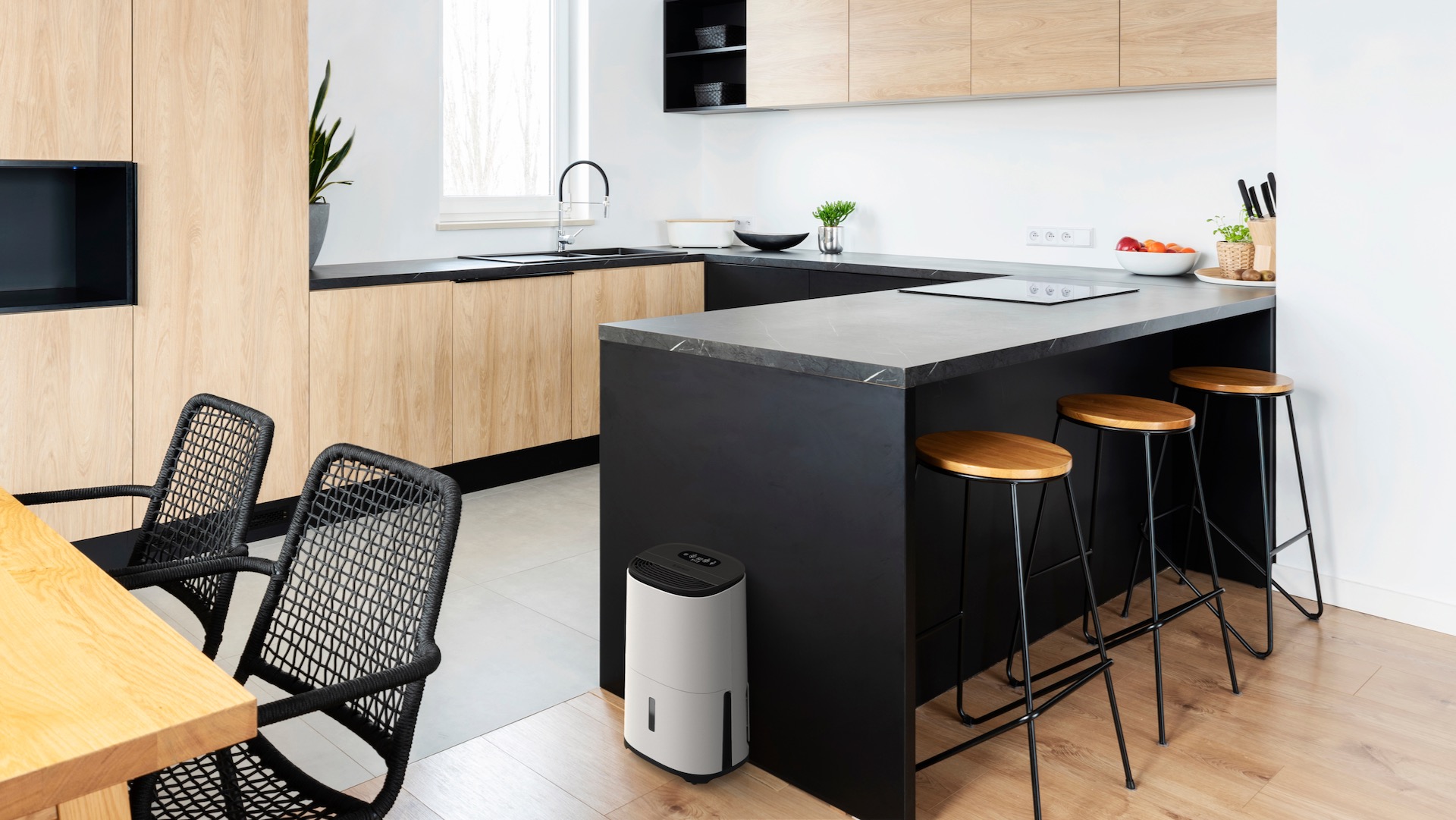
My mum has recently been diagnosed with asthma, so we bought her a dehumidifier to see if it alleviated her symptoms. It's worked wonders. Dehumidifiers are known to 'thin the air', making it a lot easier to breathe. They also make the environment less hospitable for allergy-triggering dust mites, which can't survive when the humidity is below 50%.
6. You'll need to maintain it
There are a few good reasons to clean your dehumidifier properly, and it's a job that will need to be done regularly. Limescale can be a particular problem if you live in a hard water area, like I do. As Meaco's Chris Michael points out, "It can also shorten the lifespan of your humidifier if not looked after regularly".
The company recommends cleaning its ultrasonic models every 72 hours with a descaler and suggests Oust All Purpose Descaler 25ml, £1.65 for 3 at Sainsbury's.
You'll also need to be prepared to empty your dehumidifier regularly. In the summer, I will find myself emptying the water tank twice a day – once in the morning and once at night. It's a routine that suits my garden plants quite nicely.
7. They help to cool the air
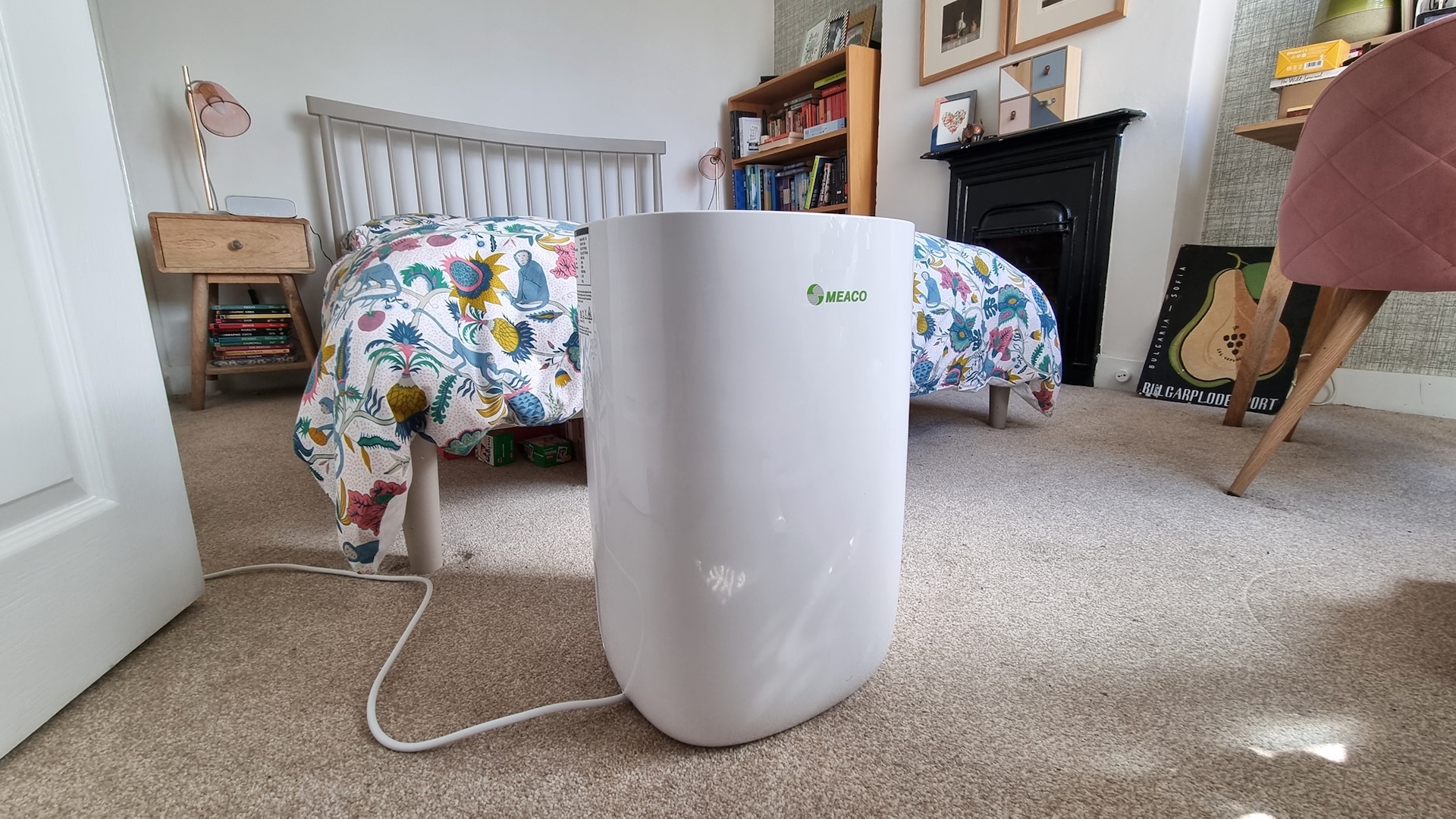
Just because you don't see any condensation over the summer, doesn't mean it's not there, which is why I like to keep mine ticking over throughout the year. And there's been one extra benefit I've noticed – the air seems to feel cooler as a result. It's therefore a great way to keep a bedroom cool without needing to turn on my too-loud fan.
"During heatwaves, it's not uncommon to experience periods of sticky, muggy conditions, especially when it's overcast," says Chris Michael. "A dehumidifier will help you stay cool and dry indoors by removing the warm, excess humidity. Say goodbye to that uncomfortable, clammy feeling and hello to summer comfort, courtesy of your dehumidifier."
More than that, dryer air is better at absorbing perspiration from our skin, because it has the ability to absorb more moisture.
"The less humid air can literally move your sweat away," says Noel Fok, technical manager at EcoAir, "and because the skin has less sweat on it, it will feel less clammy and hot."
So if you're looking for an alternative to keeping a room cool with AC, a dehumidifier could be the answer.
Is there a downside to dehumidifiers?
As I've mentioned, if you run a dehumidifier too much, it can cause the air to become too dry. The ideal humidity you're after is 30% to 50% in winter, and 40% to 60% in summer. Too low and your skin and eyes will become irritated and itchy. What's more, while dust mites hate low humidity, certain viruses thrive, leaving you more susceptible to colds and flu.
Always measure the humidity at home before you invest in a dehumidifier. If humidity is low, compare the benefits of humidifiers versus dehumidifiers.
Do you suffer from a skin condition, such as eczema? It could be worth considering an air purifier versus a dehumidifier. This won't deal with damp issues, but it can be effective in removing allergens from the air, if that's your main aim.

Amy is a PPA award-winning Digital Editor who has been working in the wonderful world of interiors for over 16 years. She has worked on titles including Inside Readers’ Homes, Inspirations for Your Home, Country House & Home and 25 Beautiful Kitchens magazine. After a stint on Beautiful Homes, she joined Ideal Home in 2010 as a Consumer Editor, then Technology Editor where she was better known as 'Girl About Tech' to prove her credentials as a product expert before landing the role of Digital Editor of Ideal Home in 2017.
Amy now works freelance across leading world-renowned Homes & interior titles such as Homes & Gardens, Real Homes and Ideal Home.
-
 Unforgettable date ideas to make a great first impression or rekindle romance
Unforgettable date ideas to make a great first impression or rekindle romanceForget the same old first date formula - these unforgettable date ideas will leave them thinking about you long after you go home
By Natalie Denton Published
-
 Butter yellow might be the colour of the season, but Amal Clooney is making me want to try sunshine shades
Butter yellow might be the colour of the season, but Amal Clooney is making me want to try sunshine shadesSpark some joy by adding some statement yellow pieces to your wardrobe just in time for summer
By Matilda Stanley Published
